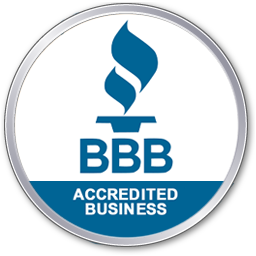How Trenchless Sewer Repair Can Save You Time and Money

If your sewer system is broken or worn down, it can cause water damage to your property or create a backup of sewage. Coming into contact with sewage or contaminated surfaces can cause dangerous illnesses like gastroenteritis.
The Benefits of Professional Land Clearing Services: Why Hire Experts?

If your land becomes unusable due to overgrown vegetation or debris, a land-clearing company can help you reclaim it. An environmental remediation team’s expertise and experience can increase efficiency and effectiveness while eliminating errors that could be made with do-it-yourself (DIY) attempts.
Lead Testing in Soil: Assessing Environmental Contamination Risks

Lead is a toxic heavy metal that can disrupt bodily functions and adversely affect vital organs like the brain, kidneys, and reproductive systems. It should not be touched, inhaled, or ingested, especially by children, pregnant people, or pets, so it is essential to perform lead testing throughout your property to ensure its safety.
Lead Testing in Older Homes: Identifying and Addressing Lead-Based Paint Hazards

To keep yourself safe and avoid further exposure, do not try to test or remove lead-based paint by yourself. Instead, have a professional environmental remediation team survey your property and perform lead abatement as necessary.
Water Damage and Indoor Air Quality: Understanding the Link

Most health effects caused by water damage result from mold growth accompanying saturated building materials. Identifying mold growth can help you catch the problem and schedule mold removal before your IAQ drops drastically.
Phase 1 ESA Checklist: Key Steps and Considerations

Conducting Phase 1 Environmental Site Assessments (ESAs) before purchasing commercial properties is an excellent way to ensure safety, accurate pricing, and compliance with regulatory standards. A Phase 1 ESA can give you insight into whether the property’s soil is contaminated or if environmentally unfriendly operations like illegal dumping occurred there, protecting you from blame.
The Importance of Timely Fire Damage Cleanup: Avoiding Secondary Damage

Executive Summary Why is it Important to Quickly Cleanup Fire Damage In addition to directly burning components of your home, fires can cause an additional wave of destruction. If cleanup is not thorough and prompt, other problems can arise after extinguishing a house fire. Fires can deliver secondary damage by leaving behind soot and smoke […]
The Hidden Dangers of Smoke Damage: Effects on Health and Property

Key Takeaways How Does Smoke Affect Your Health and Property? House fires deliver multiple waves of destruction—in addition to the fire itself, smoke can linger around, posing a threat to you and your property. Smoke is a mixture of gas and fine particles that can cause health complications after exposure. When unchecked, smoke can irritate […]
What are the Different Types of Water Damage?

Key Takeaways Understanding the Different Classifications of Water Damage Water damage can occur from various sources, including leaky pipes, floods, or broken sprinkler systems. Different types of water damage can be grouped into categories and classes based on severity. Categories are intended to label the water’s contamination level, and classes are used to explain how […]
Understanding Indoor Air Pollutants

Executive Summary What to Know About Indoor Air Pollutants Due to buildings’ enclosed nature, indoor air can have 200% to 500% times more pollutants than open spaces. Particulate matter, airborne chemicals, and other pollutants can hinder your property’s indoor air quality (IAQ), increasing the inhabitants’ risk of respiratory diseases like asthma. In extreme cases, long-term […]


